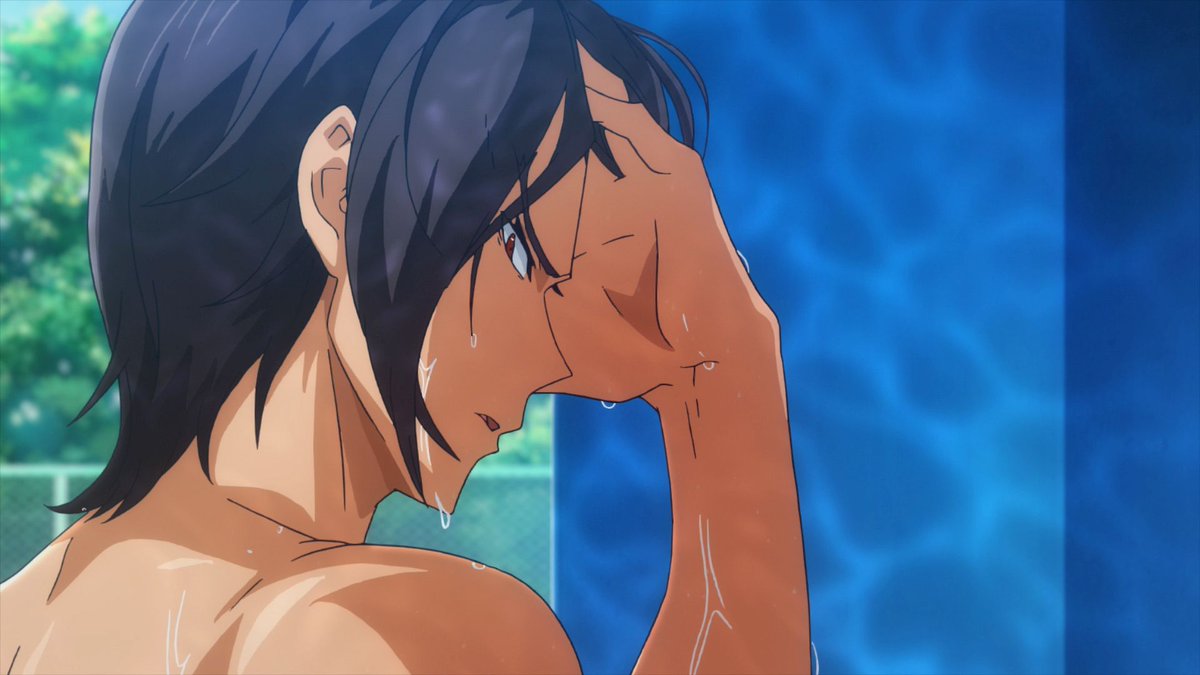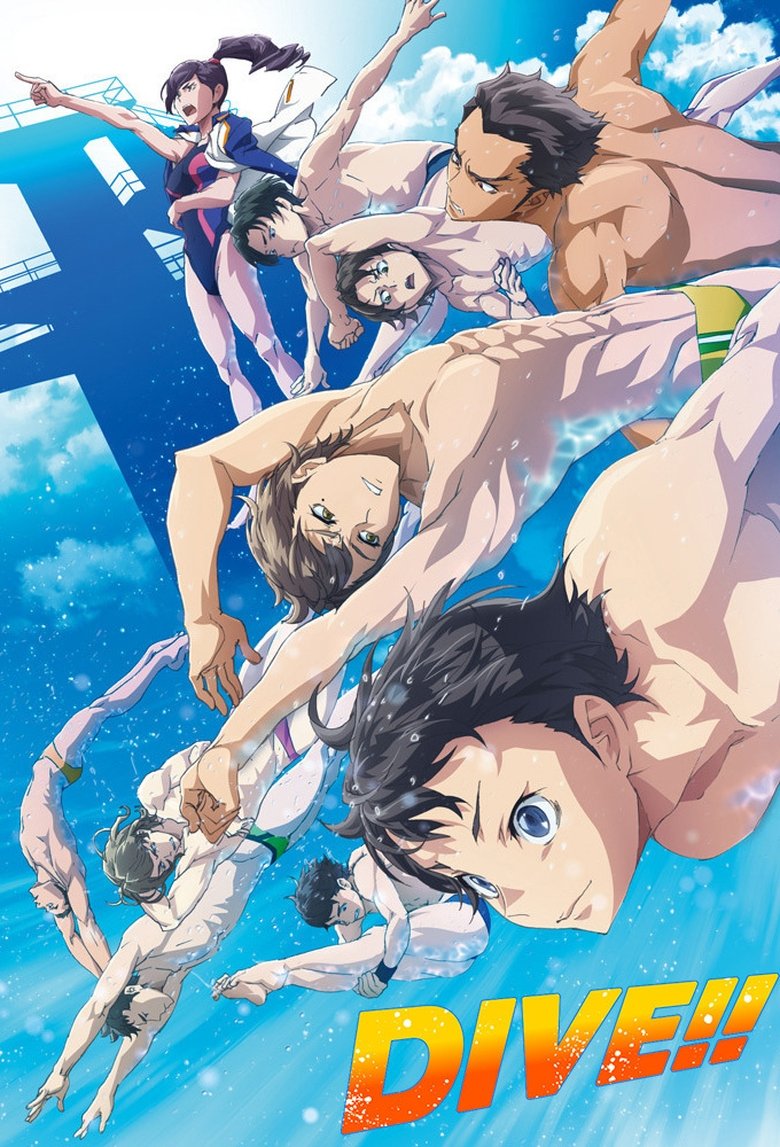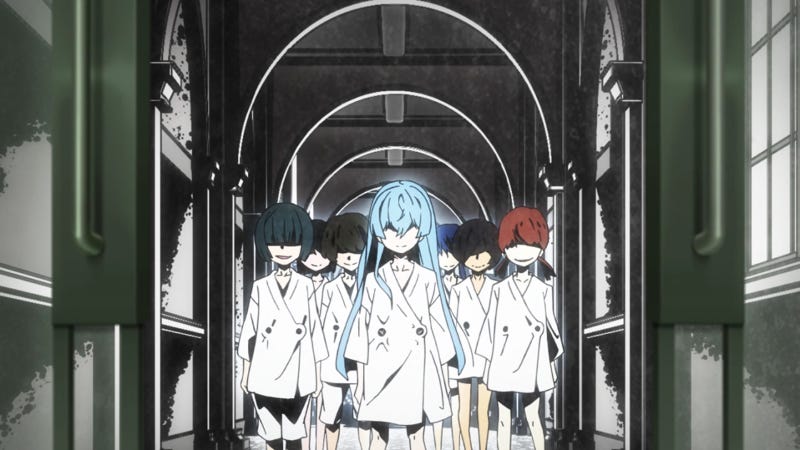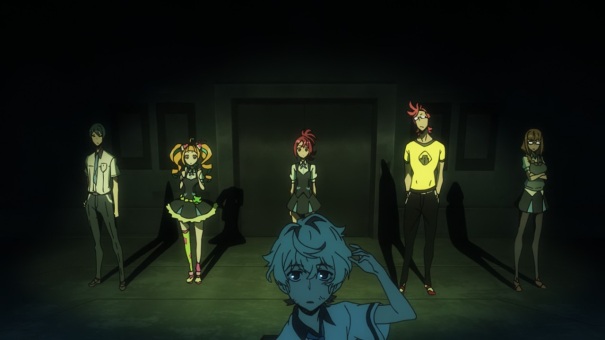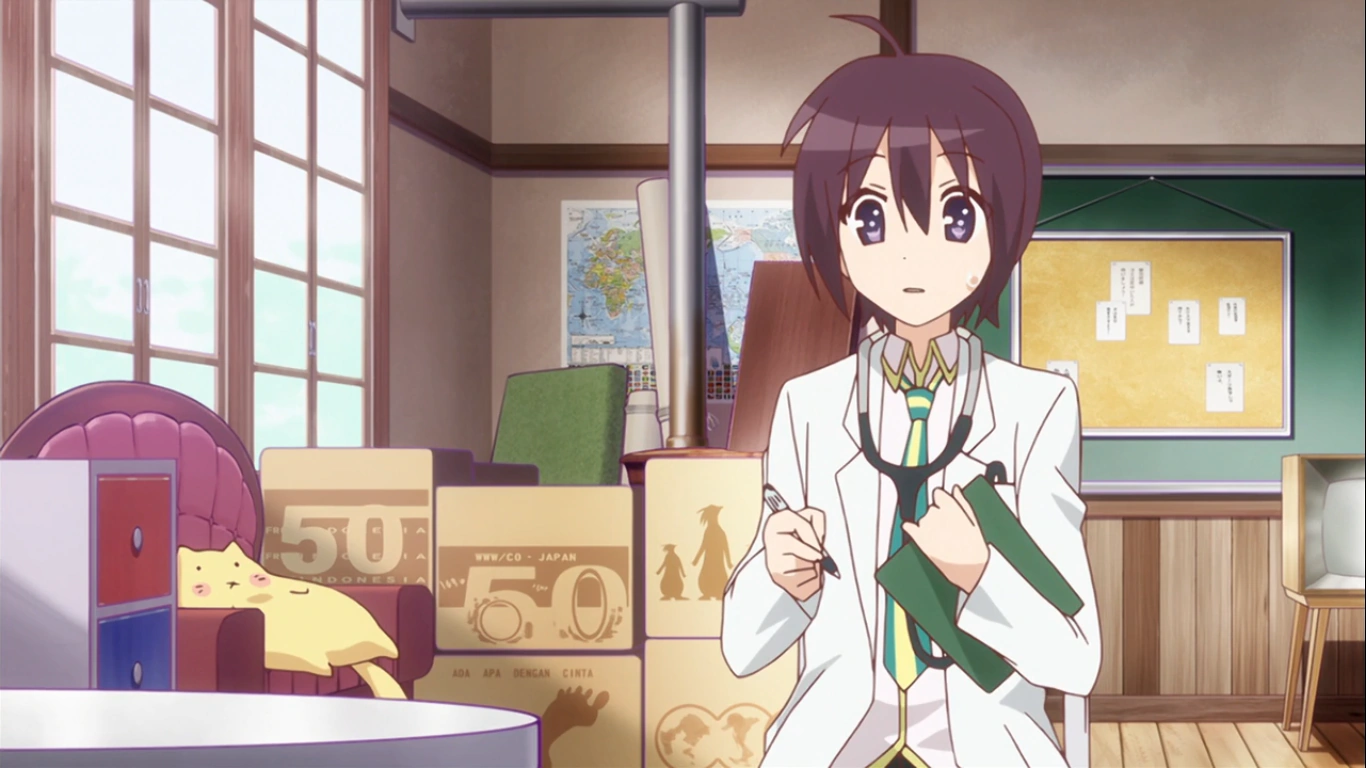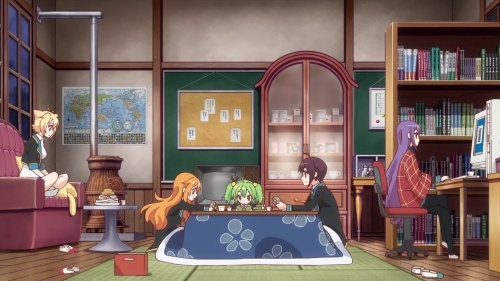A brief spoiler-free review of the 11-episode summer 2015 anime “Rampo Kitan: Game of Laplace,” animated by Lerche, directed by Seiji Kishi, and inspired by the works of author Edogawa Rampo.
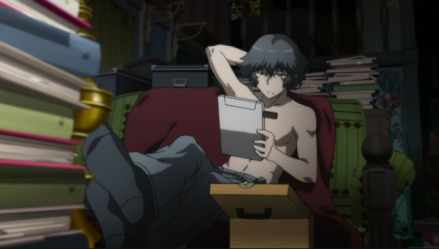
A Startling Wake-Up Call
Famous for his influence on Japanese fiction, mystery author and critic Ranpo Edogawa (romanized as Rampo) passed away a little over 50 years ago, and what a better way to commemorate the 50th anniversary of his death in 1965 than with a surreal mystery/horror anime loosely based on his stories? (Ya nailed it Japan.) That’s exactly what Rampo Kitan: Game of Laplace is, and although this series of brutal and bizarre crimes stems from an author known to write masterpieces, this clunky anime “adaptation” comes up short in just about every gruesome case. And somehow, I still enjoyed it.
Middle school student Kobayashi is framed for murder. He awakens in his classroom to find his teacher brutally mutilated, and the murder weapon dripping with blood in his hand. Any normal kid would be freaking out by now, but Kobayashi finds himself more so curious (and secretly thrilled) about this strange attempt to frame him. Watching out for Kobayashi’s well-being, a close friend named Hashiba joins the case as a willing accomplice to help prove Kobayashi’s innocence. Also roped into solving this twisted crime is Akechi, a lazy genius high school detective who immediately sees an interesting potential in the young accused boy. Desiring nothing more than to mix up his mundane life, Kobayashi pleads to be recruited as Akechi’s assistant, to which Akechi agrees to take him on—but only if he can handle the chaos that comes with disobeying the law.

Game of Laplace‘s characters are simply too fun for the plot’s serious overtones. As much as the series tries to be a philosophical thriller, Kobayashi’s enthusiasm and Akechi’s frank lack of care always kill the mood. When viewed as a comedy, however, this problem is less apparent (which is probably not the intent but it just fits better no matter how you look at it). Hashiba’s one-sided (and unresolved) bromance with Kobayshi only makes his reason for always being with the detectives sillier, and once little-girl-lover and phantom thief “Shadow Man” becomes a member of the main cast, any sense of seriousness goes out the window. Heck, this crook wears a freakin’ PAPER BAG over his head to protect his identity! A true master of disguise, right? How can I not laugh at his constantly-dumbfounded expression??
Although the characters give this series a few too many laughs than it probably should have, there’s still a nice balance of chemistry between them. Kobayashi fawns over Akechi’s work; Hashiba blushes and stammers whenever Kobayashi acts too girly; police officers Kagami and Nakamura respect and deeply care for each others’ well-being; and everyone, especially Akechi, hates Shadow Man. (Look no further than episode six for proof of this. Even if you don’t watch the series, this episode is worth it if you wanna kill time for some damn hilarious dialogue.) So if it’s not the characters, what makes Game of Laplace not as great as it should be?

The Problem with Telling a Good Mystery
From what I understand, in theory, every good mystery can be solved by oneself using the clues laid out before them. All of the necessary evidence should be placed fairly before the detective (in this case the viewer), and a decent amount of time should be given before the answer is revealed. Additionally, should a certain character need to solve the case, one piece of critical evidence will be withheld until the end explanation is made. Sounds about right, doesn’t it? Well, this is where Game of Laplace struggles hard, as there’s never enough evidence (or time) to find out whodunit.
Not only that, but the criminal or mastermind at hand rarely has any time to establish themselves as a character within the work. At most, you’ll get a ” Office Secretary” or “Construction Worker B,” and then the episode will move on to have Kobayashi quickly solve the case right after Hashiba gives a sensible hypothesis. It’s just a poorly written mystery series if that is truly the main goal, which is odd given that Rampo Edogawa is so highly regarded. (I’m guessing it’s a fault with the anime, not the original author’s stories.) As a viewer, I ended up just sitting through the series with my brain turned off, and while none of the reveals were particularly shocking, at least there was a coherent, albeit weak, story that weaves together the crimes.

Making the Most Out of a Bad Situation
As I mentioned earlier, there’s a certain standalone episode six that I recommend even if you don’t watch the series. The reason for that is simple: Funimation’s hysterical English dubbing. Quick-witted and well-voiced, the quality of acting given to such a mediocre title truly makes the most out of this not-so-hot series. While a bad dub can ruin a show, a good dub can save one, and that by far is Game of Laplace‘s most redeeming quality. Newcomer Jill Harris has proven herself on multiple occasions that she can voice a cute feminine boy (like Kobayashi) without sounding “too girlish,” and Justin Briner as this doting “boyfriend” character with Hashiba is a great match. Throw in veterans like Eric Vale for Akechi’s aggressively low voice, J. Michael Tatum’s smooth-sounding Kagami, and Sonny Strait as everyone’s least favorite bag-wearing Shadow Man and you’ve got a wonderfully solid cast!
Stuido Lerche animates the world of Game of Laplace with just as much creative pizzazz, wacky checkerboard patterns, and bright colors as they do with all their titles. Like they did with the Danganronpa 3 anime (one of my favorites), the background characters are nulled out with a single color to truly seem like “background characters.” Not my favorite visual choice, as sometimes the culprits are actually these blobs of color, causing you to be reliant on voices alone (another reason for the dub), but it does result in an interesting style. The show gets its real visual appeal and absurdity from its investigation scenes where, in a fashion similar to superior mystery title Hyouka, each breakdown of the case is done so uniquely and creatively. This helps the show stay visually entertaining, even if the plot is a little out there. Also, butterflies.
Stick to the Classics
Nearly every mystery anime I’d seen before this one was better than Game of Laplace—but not all of those shows had a cast as fun as this one was. For a 50th anniversary project, I wish they had made an adaptation for a single one of his works, not a messy conglomeration of several. The series easily could’ve been better this way, and I bet more people would’ve watched a show advertised as “Rampo Edogawa tale brought to anime” than a series loosely based on a collection of works like “The Human Chair” and “Twenty Faces.”
This is going to be one of those shows that I enjoyed, but I can guarantee that most will not. The character humor tickled me just right with Funi’s dub, and Lerche happens to be one of my favorite animation studios. In other words, this series is only recommended to those thirsting for more murder mystery anime who have already exhausted the genre’s reserves in their desperate hunt. Watch Danganronpa, Hyouka, Higurashi, Rokka—any of those anime first; as the saying goes, “Stick to the classics” (ironic, I know). Then, only once you’ve thoroughly enjoyed what the genre has to offer, come stop by the Akechi detective agency for a laugh with old Rampo Edogawa.

The harder the game is to solve, the more fun you can have, right?—Akechi Kogorou
Afterword
Not much to say here, especially since several character backstories and relationships remain largely unresolved by the end (hang in there, Hashiba). Like, Akechi is seen crushing up and washing down these white pills with the same brand of canned coffee all the time, but we never know why he does it . . . huh. Weird.

Still, I downed this series like a hot “Coffee” myself here at the cafe, and so you’ll have to let me know what you thought about this series or my review down in the comments! It’s nice to be back for a quick review and not just an OWLS post, am I right? Not that I dislike writing them, but it seems like that’s all I write anymore, and I’ve got to change that! Thanks for reading, and until next time, this has been
– Takuto, your host














